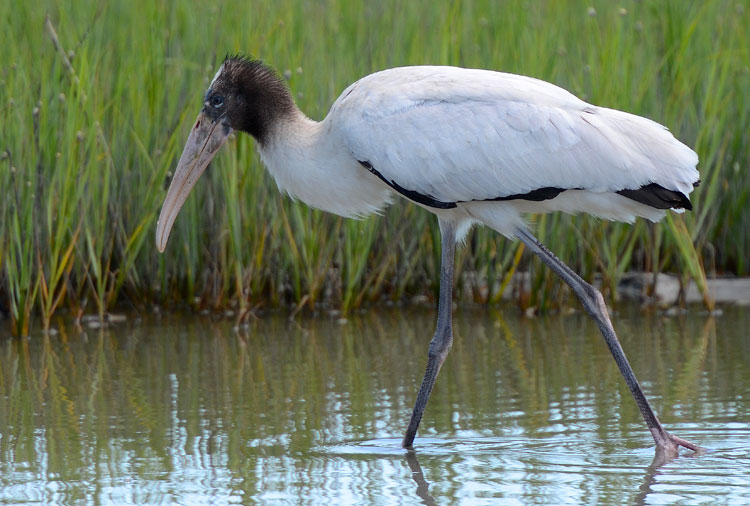 |
| A juvenile Wood Stork feeding in the shallows at Pinckney Island NWR in South Carolina. |
I pulled the car over and watched the small flock through the binocs. The birds were feeding, and I could see them stirring the water with their feet. They had their bills open in the water, waiting for a fish or crab to make contact. After a while, I got out of the car, crossed over and sat down behind the grasses. I remained still and quiet, and they went about their business of fishing and eating...
 |
| ...a juvenile Wood Stork fishes with his bill open, waiting for a fish or crab to make contact. |
Woods Storks have a unique way of catching their prey. They like to forage in shallow water with large concentrations of fish or crabs where they hold their bills open in the water. When a fish or crab makes contact with the bill, it triggers a snap-shut reflex, and the Wood Stork nabs its dinner without ever having to see into the murky water. Because Wood Storks are tactile feeders and do not have to see their prey to catch it, their method of feeding is called "grope-feeding" or "tacto-location." Click here for a detailed explanation of this feeding method and other information on Wood Storks.
In the following video, you can see the Wood Stork stirring the water with its foot, then scooping up a little crab. At the end of the video, I put some of the action in slow motion to better see the Wood Stork eating a little crab...
 |
| A Wood Stork uses "foot stirring" to drum up some lunch. |
Wood Storks are doing well in Georgia and South Carolina, and the government is thinking about changing their status from endangered to threatened. Click here for an NPR article and broadcast of the story.
 |
| Wood Storks are large birds. This guy was over three feet tall. I loved watching him move slowly through the water. |
In part two of this series I'll focus on the adult Wood Stork's face, so you can see how different a juvenile and an adult look. I took these photos on June 19, 2012.



















